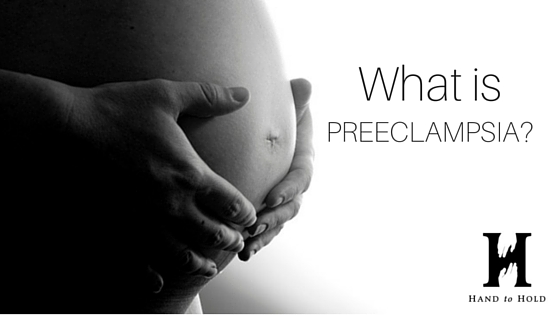With May being Preeclampsia Awareness Month, it’s important to know the signs and symptoms of this dangerous disease.
What is preeclampsia?
From preeclampsia.org:
Preeclampsia is a disorder that occurs only during pregnancy and the postpartum period and affects both the mother and the unborn baby. Affecting at least 5-8% of all pregnancies, it is a rapidly progressive condition characterized by high blood pressure and the presence of protein in the urine. Swelling, sudden weight gain, headaches and changes in vision are important symptoms; however, some women with rapidly advancing disease report few symptoms.
It also accounts for 15% of all premature births in the United States. I know these facts because last May I sat in the hospital after having my son at 31 weeks of pregnancy. I remember thinking that I was painfully aware of preeclampsia.
In the United States preeclampsia causes 18% of maternal deaths. I know this because I lost an acquaintance from complications of preeclampsia just months before my own journey. So when the doctors sat at my bedside explaining the seriousness of the situation, all I could do was nod and say, “Yes. Believe me. I’m aware.”
It seemed like a cruel cosmic joke that I would get preeclampsia. I had no risk factors. It was my second pregnancy. When my friend died, there was a feeling of that could never happen to me. So it goes.
Fear and waiting
My daughter’s fifth birthday party was upon us, and I spent the day working far harder than a pregnant woman should, so when I started bleeding that evening we thought I had just overdone it. Hours later I was diagnosed with a partial abruption and mild preeclampsia and kept in the hospital for four days.
That “overdoing it” may have been what kept me safe. My next regular midwife appointment was not for another two weeks, but I was monitored more closely. Within two days of discharge my blood pressure had skyrocketed, my legs were enormous, and my face was puffy. I was given a do-not-pass-go trip back to the hospital. I was 29 weeks pregnant.
The next two-and-a-half weeks was a mix of fear and boredom as we waited on my body to make the next move — as we sought balance between my life and his. There is something almost unbearable about this knowledge.
The only cure for preeclampsia is delivery, but we wanted to buy my son every possible day in utero, so we monitored me around the clock for signs that I had entered the danger zone. When left untreated preeclampsia can progress to Eclampsia (seizures) or HELLP syndrome — the results of which took the life of my friend.
At 31 weeks and 5 days my beautiful son was born via c-section after my lab work went downhill. We were lucky — with weeks in the hospital I had been given two complete rounds of steroid shots, and he came out breathing on his own. Because of the Magnesium Sulfate given to prevent seizures I was not allowed to see him for the longest 24 hours of my life. After 40 days of the typical NICU rollercoaster he came home, and at one year old he is thriving. Though preeclampsia generally resolves itself within 48 hours of delivery, I was an outlier who relied on blood pressure medication for more than six months.
No one is sure what causes preeclampsia, and because prompt treatment is needed and delivery is the only cure, awareness is key. Visit preeclampsia.org to learn more about the warning signs, and how you can help raise awareness for this unfortunately common, and serious, condition.

Photo Credit: Charlotte Shoneman

